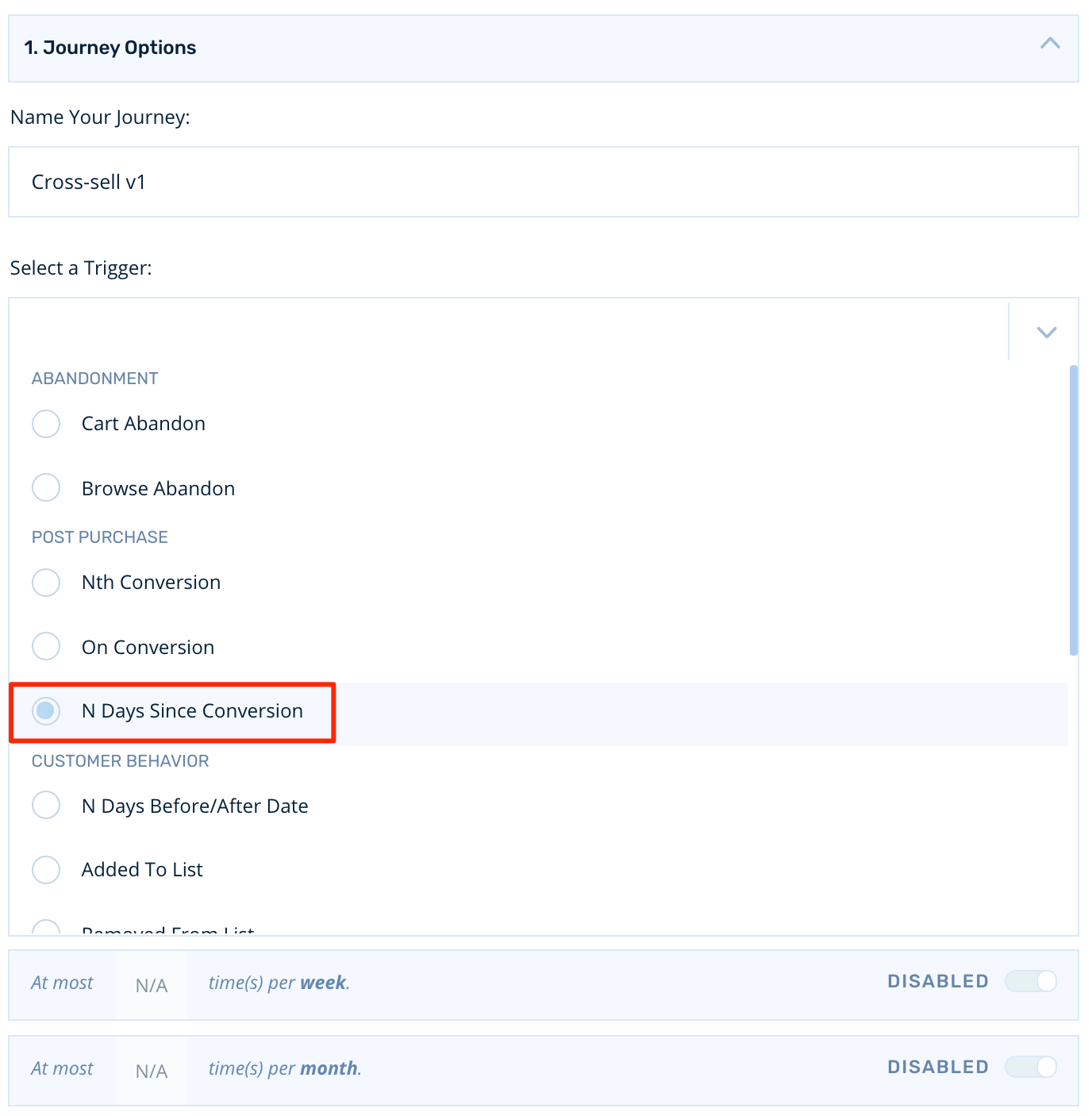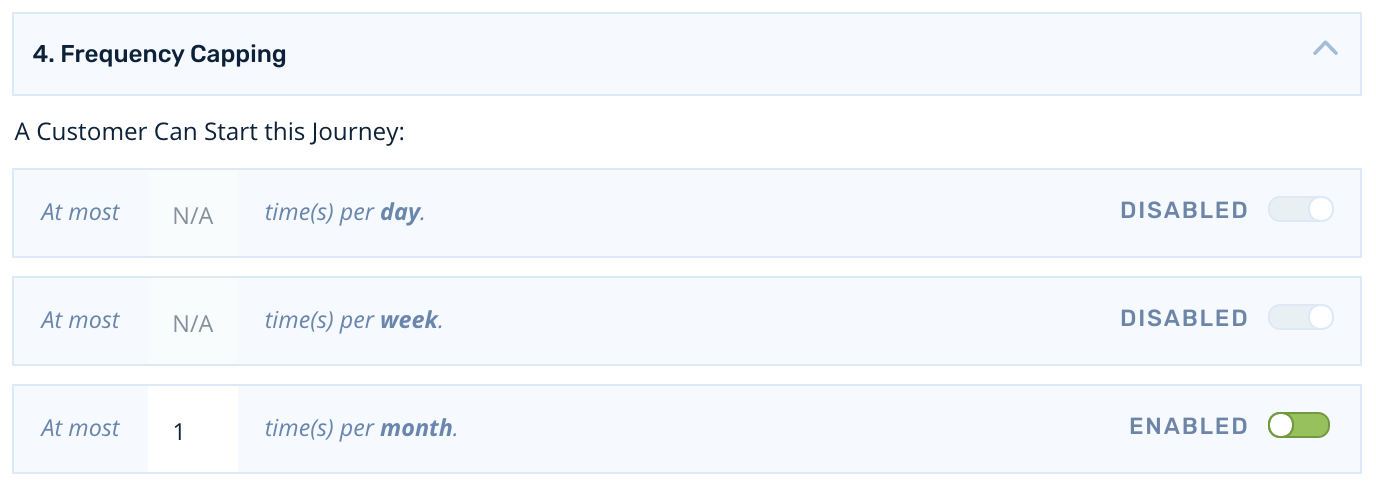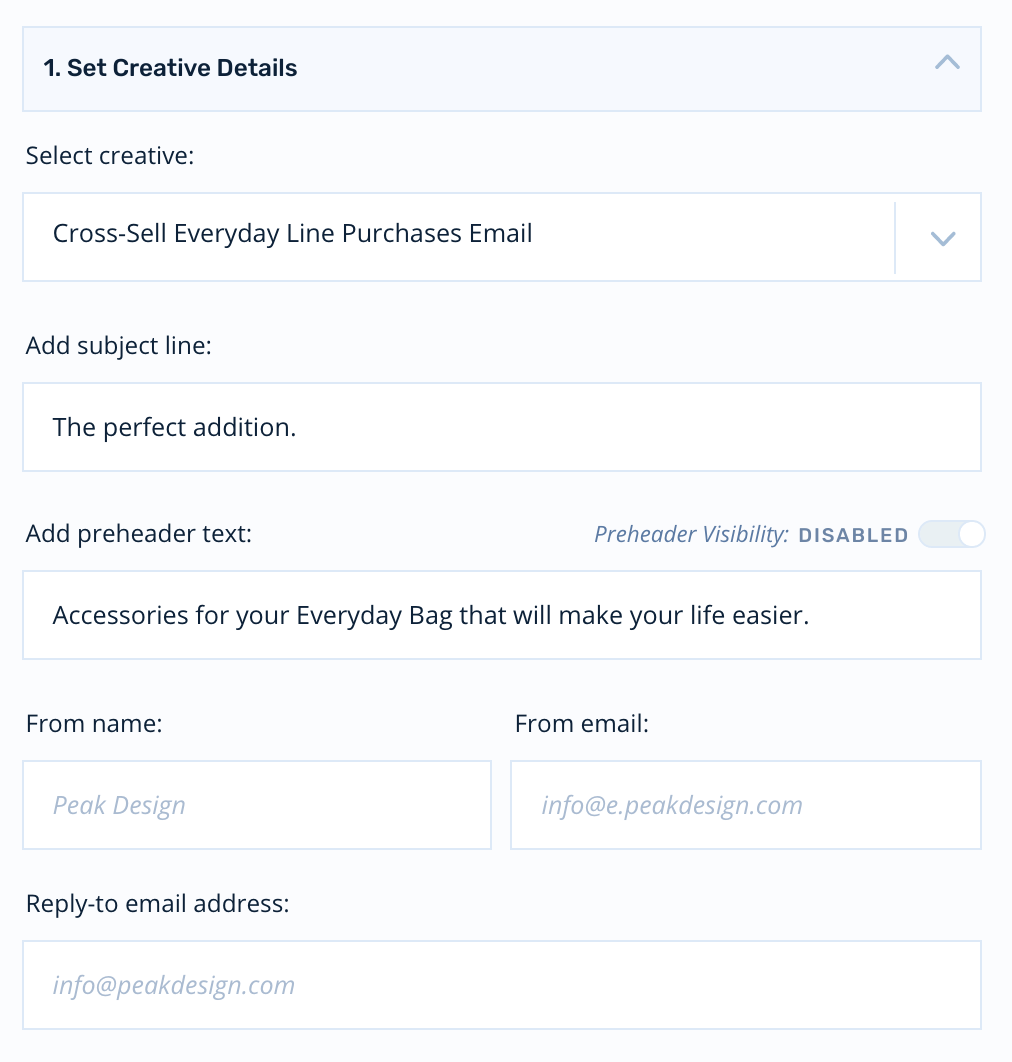Cross-sell
In this tutorial, you'll learn how to set up a post-purchase cross-sell journey which triggers after the purchase of a specific product.
Strategy
This guide is focused on the operational aspects of configuring a cross-sell journey. If you're thinking about your overall approach to cross-sell, start with this strategy-focused resource:
Creative
You'll build your templates using the Advanced HTML/CSS Editor or the Drag and Drop Editor.
Configuring the Journey
First, click Journeys in the main navigation. Then, click Add New Journey.
Start by naming the Journey something like, "Cross-sell v1".
Then, select the N Days Since Conversion trigger:

Next, let's set our trigger to 20 days post-purchase. This will ensure two things: 1) That the customer has received their order and 2) they haven't purchased anything else in the last 20 days.

Conversion Rules
We want the cross-sell journey to end if the customer converts, so we'll leave the conversion rules in their default state. The customer will exit if they purchase during the journey:

Frequency Capping
Let's also set a frequency cap so that customers can only enter this journey at most 1 time per month.

Building the Journey
Targeting Your Audiences
Target by Product ID
To start, click Add New Audience.
For this example, we're going to build an audience to identify customers who purchased a fictitious product SKU. It's important to note that the product SKU in your catalog doesn't always match the product SKU that's passed to Rejoiner on the backend. This could be due to product configuration, bundling, parent/child relationships, etc. It's also quite common for product SKUs to change periodically.
We'll show you how to verify product IDs in the next section, but for now, let's use the Customer has purchased product with ID filter to target the specific SKU we want to cross-sell against:

Target by Product Name
An alternative approach is to build the audience by product name. This is often a more future-proof strategy, as it's unlikely product names will change even if the underlying product SKU does. In this case, we would use the Customer has purchased product with name filter:

Positioning Nodes
Now that our audience is set, let's set up some email nodes. Click the Journey Nodes icon, select Send Email and drag it into position below the audience.

Configuring Email Nodes
First, you'll select your creative. Then, you'll configure your subject lines and preheaders.
The email node will inherit the default sender information from your account, but you can override this on a per-mail basis if you wish:

Wait Time
Since this is a one-step journey, we'll just need to set a wait time on the first email. This wait time determines when the node will process relative to the previous node. In this case, the previous node is the customer qualifying for the audience so we can set the email to fire Immediately:

Activating the Journey
When you're ready to turn your journey on for production audiences, click Activate in the upper-right hand corner:

Updated 2 months ago
